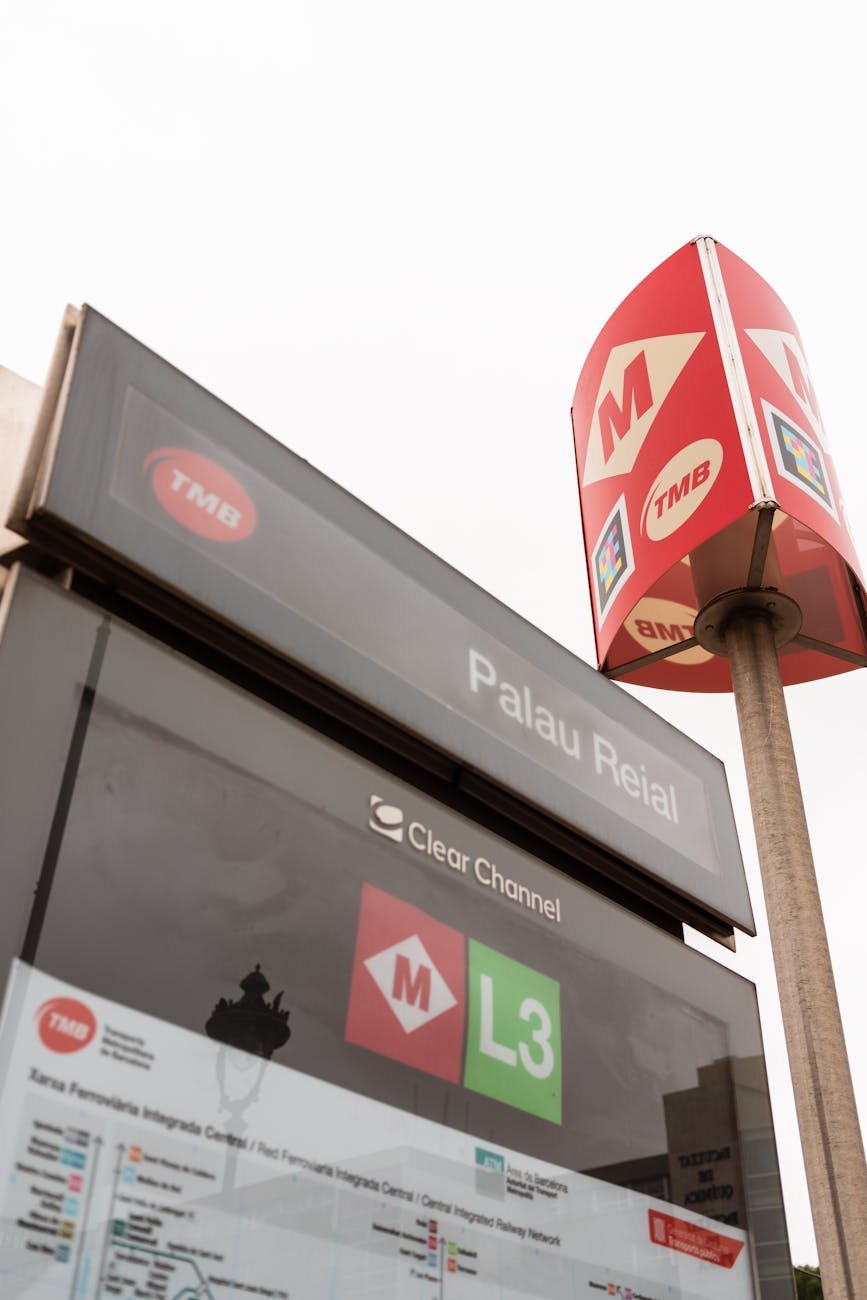Public Transport in Russia
If you’re an Austrian globe-trotter thinking about cruising through Russia, getting the hang of the transport is like having a good map on the road trip. Let’s break down how to zip through Russian cities, hop on the railways, and make sense of Moscow’s numerous train stations.
Overview of Public Transport in Russian Cities
Russian public transport is as widespread as granny’s gossip at a family reunion, especially in big players like Moscow and St. Petersburg. Moscow alone clocks up a staggering 19 million rides on a regular weekday. You’ve got a smorgasbord of options:
- Metro city’s veins
- Big ol’ buses
- Nostalgic trams
- Vintage vibed trolleybuses
- Ride-hailing apps like Uber and Yandex Taxi
The Moscow Metro is both efficient and a visual feast. For saucy advice on using public transport in these metropolises, check out our article on top tips for using public transport in Moscow and St. Petersburg.
Russian Railways Network
The Russian Railways are the iron horses of long-distance travel across this colossal country. They hustle both high-speed and city trains and even have a grip on the commuter rails. With a neat trick of having 98% trains arriving within five minutes of time in 2019, they offer unmatched promptness.
| Thing | What’s It Up To? |
|---|---|
| Fast-Footed Trains | Moscow to St. Petersburg VIP route |
| Between Cities Trains | Bring close-knit communities to central buzzing spots |
| Daily Worker Trains | Get city folks to their 9-to-5 |
| Punctuality Score | 98% on-time showcase in 2019 |
For Austrian explorers, this railway spiderweb’s extent and precision are a jackpot for your itinerary. Learn more in our comprehensive guide to Russia’s public transport for Austrians.
Moscow’s Railway Terminals
Moscow’s the beating heart of Russian train travel, home to nine bustling stations each tailored for a specific compass point:
- Belorussky – Western vibes
- Kazansky – Southeast junctions
- Kievsky – Southward rodeos
- Komsomolskaya Square (Leningradsky, Yaroslavsky, Kazansky) – Mixed bag
- Kursky – Toward the East and South
- Paveletsky – Sunward ho!
- Rizhsky – Northwest vibes
- Savyolovsky – True North
- Yaroslavsky – Eastern inquiries
Knowing your starting gate saves time and brain cells. Each terminal pampers tourists with amping facilities ensuring smooth navigating.
For nitty-gritty tips on Russian public transport as an Austrian, mosey over to our article on how to use Russia’s city transport system for Austrian travelers.
Additional Considerations
Don’t forget to arm yourself with essential travel apps and savvy tips for hassle-free commutes. Being clued-up means you’re all set to milk Russia’s fab public transport system. For insider secrets on budget-friendly city-trotting, swing by best ways to travel around Russian cities using public transport.
Accessibility in Russian Public Transport
It’s all too clear – getting around Russia ain’t just about the sights. It’s about being seamlessly connected for everyone. So, if you’re an Austrian tourist, and accessibility’s your jam, let’s dive into how the Russians are sorting it out for ya!
Facilities for People with Disabilities
Russian cities are stepping it up big time, making their public transport more accessible to everyone, especially those with disabilities. More trains have ramps and lifts now, and you’ll spot wheelchair-friendly cars more often than not. These additions are changing the game for making travel inclusive and easy.
| Facility | Availability |
|---|---|
| Trains with Ramps/Lifts | Available |
| Wheelchair-Friendly Rides | On the Rise |
Enhancing Inclusivity in Transportation
The work never stops when it comes to Russian public transport getting more inclusive. Think signposts that stand out, directions as clear as day, and announcements you can actually hear. Plus, tactile maps are a game-changer for those who need them – all this makes traveling a total breeze for everybody.
Inclusivity hotshots:
- Signposts and Clear Directions: Absolute lifesavers in the hustle and bustle of transport hubs.
- Audio Announcements: Handy for visually impaired folks, keeping them in the loop with every stop and change.
- Tactile Maps: Total win for navigating stations without a hitch.
Accessible Options for Travelers
If you’re a traveller with disabilities, you’re not left high and dry in Russia. There’s a whole host of accessible options to help you make your way through the public transport system. Tourist spots and local organisations are geared up with tips on accessible routes and even guide you on how to make your stay as comfy as possible.
Top accessible picks:
- Local Organisations: They got your back with all the right info and support.
- Special Brochures and Websites: Spotlighting tourist spots that are easy to reach.
- Wheelchair-Friendly Places to Stay: Comfort’s key, and these spots keep you sorted.
Want to make sure you’ve got the lowdown on getting around? Check out our tips on top ways to zip around Russian cities using public transport and smart hacks for riding public transport in Moscow and St. Pete.
Navigating Public Transport in Russia
Getting around in Russia using public transport can be a breeze once you know the ropes. This guide spills the beans on mastering the metro, trams, minibuses, and ride-hailing services, especially for folks from Austria.
Using the Metro System
The metro in Russian cities is like a trusty old Swiss watch—reliable and fast. You’re spoiled for choice with contactless cards or tokens to get in. Tokens are up for grabs at the counter, but if you’re zipping around often, consider snagging a pre-loaded card. In Moscow, they call it the “yedíny,” and it’s your golden ticket for buses and trams too.
| City | Metro Card | Cost (per ride) |
|---|---|---|
| Moscow | Yedíny | ₽55 |
| St. Petersburg | Podorozhnik | ₽45 |
Psst! Want more nitty-gritty on public transport in Moscow and St. Petersburg? We’ve got you covered in our top tips for using public transport in Moscow and St. Petersburg guide.
Utilizing Trams and Minibuses
Trams and minibuses, known locally as “marshrutki,” are the underdogs of Russian public transport. Trams are your go-to for hitting main spots in the city—just hand over the fare to the conductor and you’ll get a paper ticket.
Minibuses, on the other hand, are tiny road wizards with set routes bustling through busy areas. Pass the fare to the driver, hop on, and you’re good to go. These give you about 12 seats to play with and can be more bendy with timings.
| Service Type | Payment Method | Cost (approx) |
|---|---|---|
| Tram | Conductor | ₽25 – ₽50 |
| Minibus (Marshrutki) | Driver | ₽30 – ₽60 |
Hungry for more details on getting around Russia’s cities? Feed your curiosity with our how to use Russia’s city transport system for Austrian travelers article.
Benefits of Ride-Hailing Services
When all else fails, there’s Uber or Yandex Taxi. These apps are like your personal chauffeurs, without the royal price tag. They’re lifesavers if your Russian gets lost in translation.
Here’s why ride-hailing is your buddy:
- Fixed prices: No more squabbling over fares.
- Cashless payments: Handle everything through the app.
- Customer support: Multilingual help, even in English.
For more juicy transport tidbits crafted for Austrians, peek at our a comprehensive guide to Russia’s public transport for Austrians.
Get to know these options and you’ll be whizzing through Russia’s public transit system like a local, making your travels downright enjoyable.
Travel Tips for Austrian Explorers
Getting around in Austria and Russia can add a whole new dimension to your adventure. Here’s what you need to know about Austrian transport, must-have apps, and some nifty tricks for a budget-friendly journey.
Getting Around in Austria
Austria’s got your back with a well-linked transport system that makes city and countryside jaunts a piece of cake.
| Ride Style | What’s Great |
|---|---|
| Trains | Zap between big cities and quaint towns with ease. |
| Buses | Frequent hops, and sometimes you can score free rides in spots like Stubai if you’ve nabbed a tourist card (No Trace Travel). |
| Cable Cars/Gondolas/Funiculars | Reach high peaks and soak up awesome views (No Trace Travel). |
Austria’s public transport is trustworthy, so getting around is as smooth as a cool Viennese waltz.
Must-Have Apps for Your Adventure
Equipped with the right apps, planning your escape gets a notch easier. Here’s what you’ll need in both Austria and Russia:
- Verkehr: Perfect for navigating Russia’s streets. It helps keep track of your routes, cancellations, and leaves less fingerprints on the planet (No Trace Travel).
- Yandex.Maps: Your go-to for Russian cities; it’s got maps that don’t miss a beat, traffic tidbits, and public transport deets.
- Google Translate: To break through the language wall. Handy for those “what does that mean” moments.
- Citymapper: Makes sense of public transport choices in big Russian cities.
Savvy Travel Hacks
Here’s how to make your travels in Austria and Russia swift and light on the wallet:
- Tourist Cards: In Austria, these magical cards can get you a fare-free ride on local buses (No Trace Travel).
- Do Your Homework: Leverage apps like Verkehr and Yandex.Maps to map out your journey ahead of time. This will cut down on your stress levels.
- Think Outside the Bus: When the local transport’s thin, like in remote parts of Kazakhstan, wheels or a ride service might be a better call (Lonely Planet). For Russia, Yandex.Taxi is your trusty steed for hire.
- Be Hair Care Aware: Oops! Wrong section – let’s keep on trucking.
- Tourist Discount Cards: Grab these to save a chunk on transport costs (No Trace Travel).
Using these hacks and tools, finding your way around Russia will be more of a breeze. If you want the scoop on travelling within Moscow and St. Petersburg, check out our piece on inside tips for getting around Moscow and St. Petersburg.

